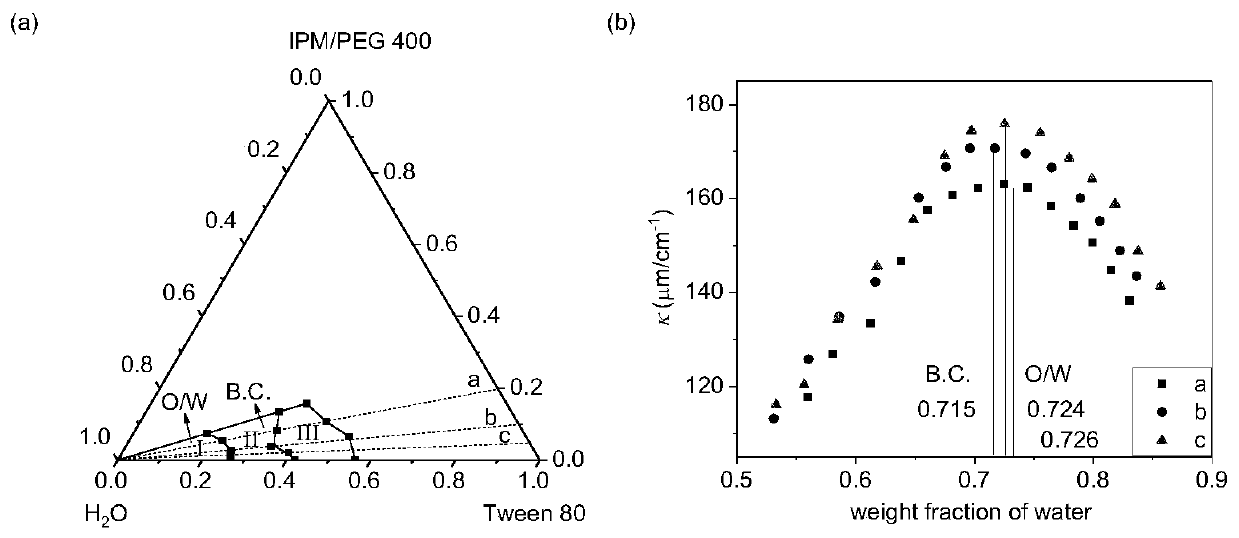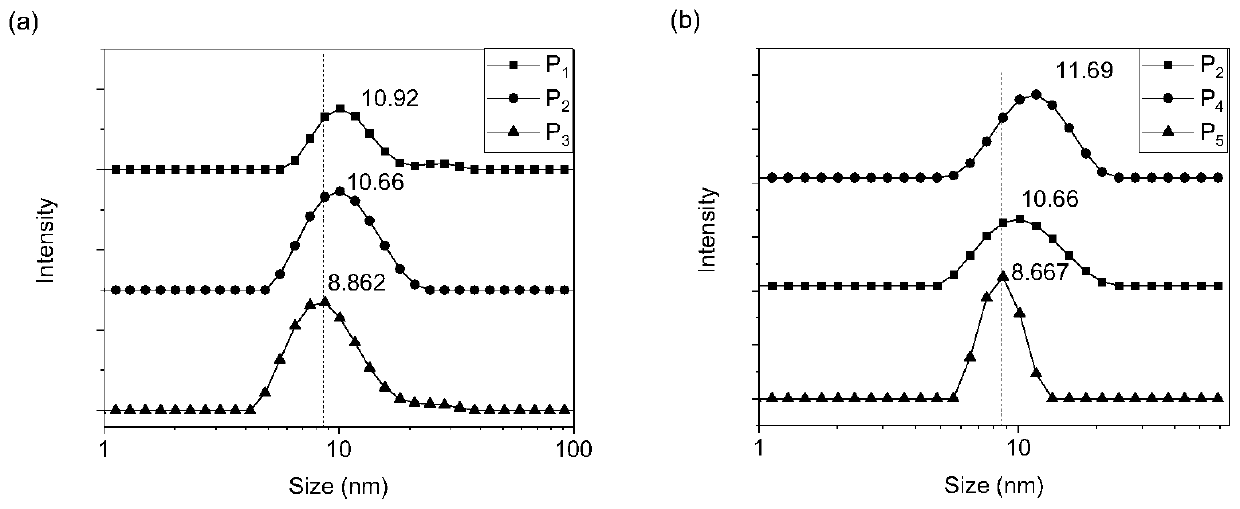In vitro release and antioxidant properties of loaded apigenin based on the construction of tween 80 biocompatible microemulsion
A technology of apigenin and microemulsion, applied in the directions of emulsion delivery, antidote, drug combination, etc., can solve the problems of poor water solubility and practical utilization limitation, and achieve the effect of improving solubility and good sustained release effect.
- Summary
- Abstract
- Description
- Claims
- Application Information
AI Technical Summary
Problems solved by technology
Method used
Image
Examples
Embodiment 1
[0038] Put 1.7g Tween80, 0.15g IPM, and 0.15g PEG 400 in a stoppered colorimetric tube, mix it evenly with a vortex mixer, and stir it well to dissolve it. Then, 8 g of double-distilled water was added dropwise into the colorimetric tube, and fully stirred in a constant temperature water bath at 50-60° C. to dissolve it. Finally, let it stand in a constant temperature water bath at 25°C to achieve phase equilibrium, and the obtained microemulsion is the drug-loaded microemulsion, denoted as P 1 .
Embodiment 2
[0040] Put 1.8g Tween80, 0.1g IPM, and 0.1g PEG 400 in a stoppered colorimetric tube, mix them evenly with a vortex mixer, stir well to dissolve them. Then, 8 g of double-distilled water was added dropwise into the colorimetric tube, and fully stirred in a constant temperature water bath at 50-60° C. to dissolve it. Finally, let it stand in a constant temperature water bath at 25°C to achieve phase equilibrium, and the obtained microemulsion is the drug-loaded microemulsion, denoted as P 2 .
Embodiment 3
[0042] Put 1.9g Tween80, 0.05g IPM, and 0.05g PEG 400 in a stoppered colorimetric tube, mix it evenly with a vortex mixer, and stir it well to dissolve it. Then, 8 g of double-distilled water was added dropwise into the colorimetric tube, and fully stirred in a constant temperature water bath at 50-60° C. to dissolve it. Finally, let it stand in a constant temperature water bath at 25°C to achieve phase equilibrium, and the obtained microemulsion is the drug-loaded microemulsion, denoted as P 3 .
PUM
| Property | Measurement | Unit |
|---|---|---|
| refractive index | aaaaa | aaaaa |
Abstract
Description
Claims
Application Information
 Login to View More
Login to View More - R&D
- Intellectual Property
- Life Sciences
- Materials
- Tech Scout
- Unparalleled Data Quality
- Higher Quality Content
- 60% Fewer Hallucinations
Browse by: Latest US Patents, China's latest patents, Technical Efficacy Thesaurus, Application Domain, Technology Topic, Popular Technical Reports.
© 2025 PatSnap. All rights reserved.Legal|Privacy policy|Modern Slavery Act Transparency Statement|Sitemap|About US| Contact US: help@patsnap.com



